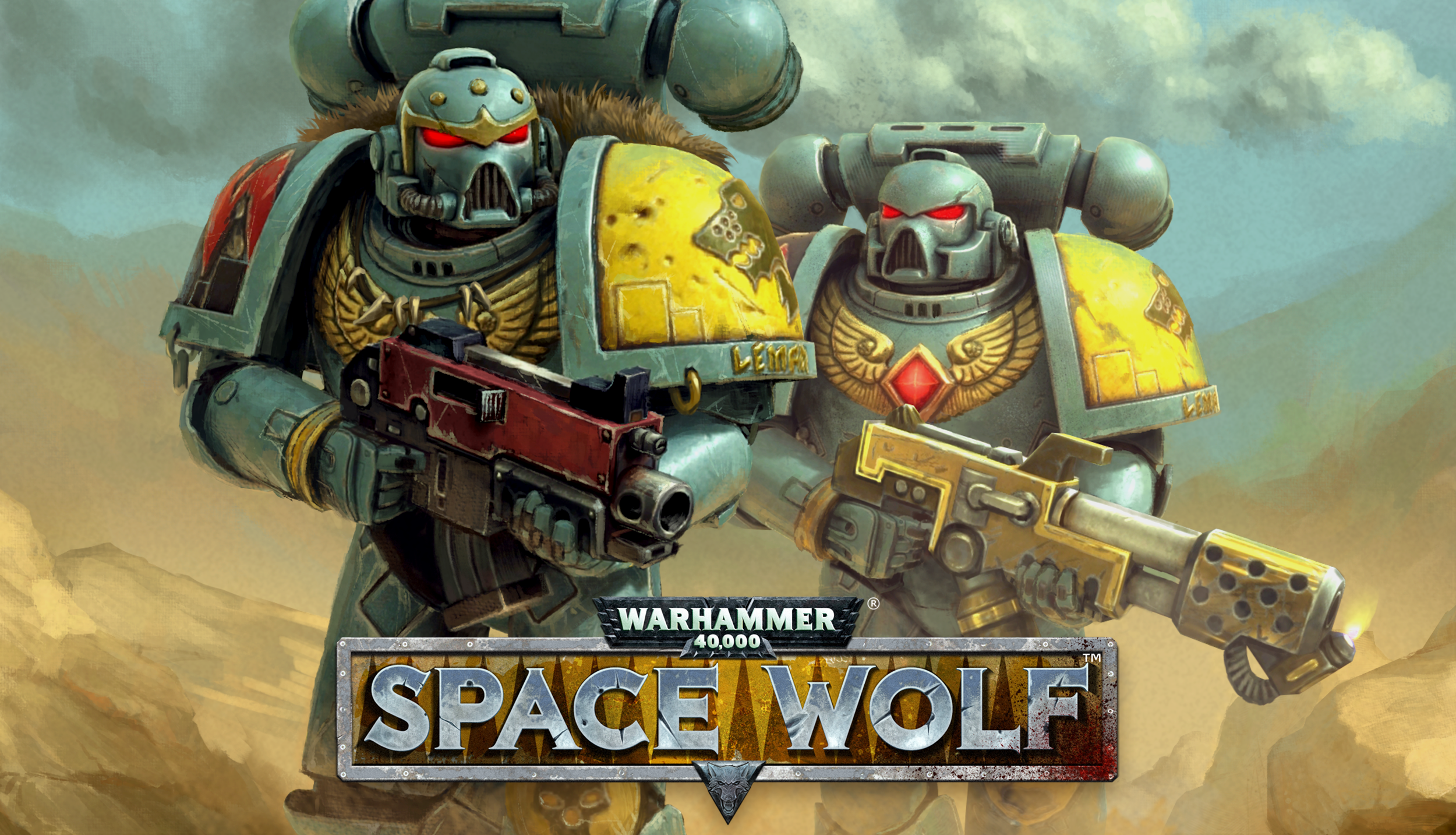[Review] Warhamer 40,000: Space Wolf – Nintendo Switch
Warhammer 40,000: Space Wolf
Nintendo Switch
Developed By: Herocraft
Published By: Herocraft
Category: Strategy, Card Game, Turn-Based
Release Date: 01.23.20
Even though I’ve never played the Warhammer 40,000 tabletop game, I’ve always really liked the series’ overall visual aesthetic and deep lore. I’m a huge fan of the Dawn of War PC game series, as well, so I have some experience with the WH40K universe. Though they lack a little something in terms of personality, the Space Marines are arguably the definitive visual icon of the 40K universe, so of course they get the most love in video game adaptations. Warhammer 40,000: Space Wolf for the Nintendo Switch is the series’ latest video game release. It’s a turn-based strategy game infused with card game elements that consists of a solid base game system that lacks enough polish to truly satisfy.
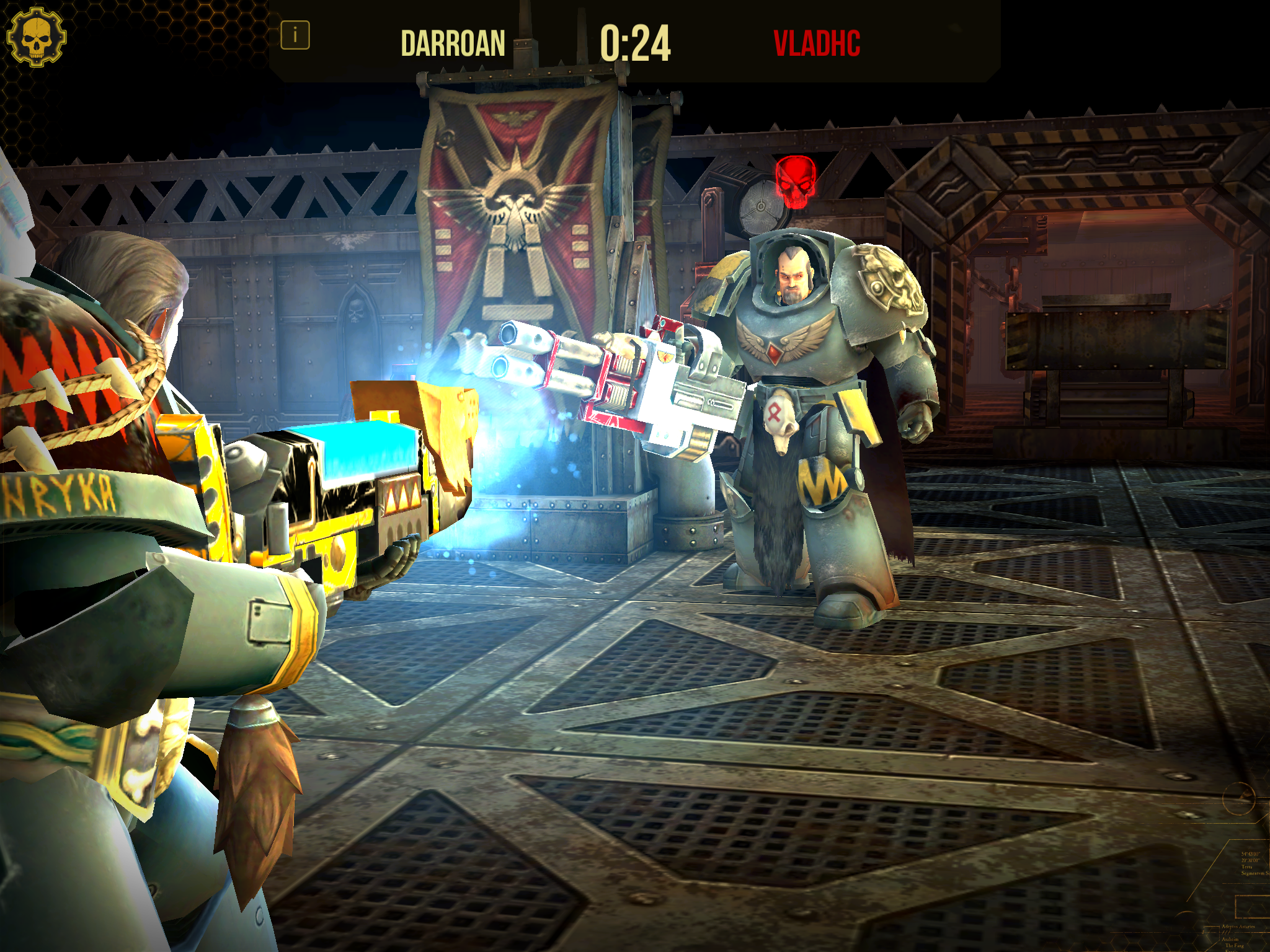
The Wolves of Fenris
Space Wolf’s storylinesees players assume the role of veteran Space Marine Valgard Twice Slain of the Space Wolves chapter (Google it if you need a lore update; we’d be here all day if I tried to explain the lore from WH40K). His team gets scattered during a mission to exterminate some Chaos cultists, but a little setback like that won’t stop him from achieving his objectives. He sets off to gather the survivors and cleanse some heretics. It’s pretty standard stuff; one thing 40K fans know is that there’s not a ton of depth to the Space Marines; they’re pretty straightforward in their motivations and objectives. Kill everything that isn’t part of the Empire… and even then, if it’s not part of the Empire the right way, kill it anyway. I guess what I’m saying is that you should pick this game up because you like deep strategy, not deep storylines.
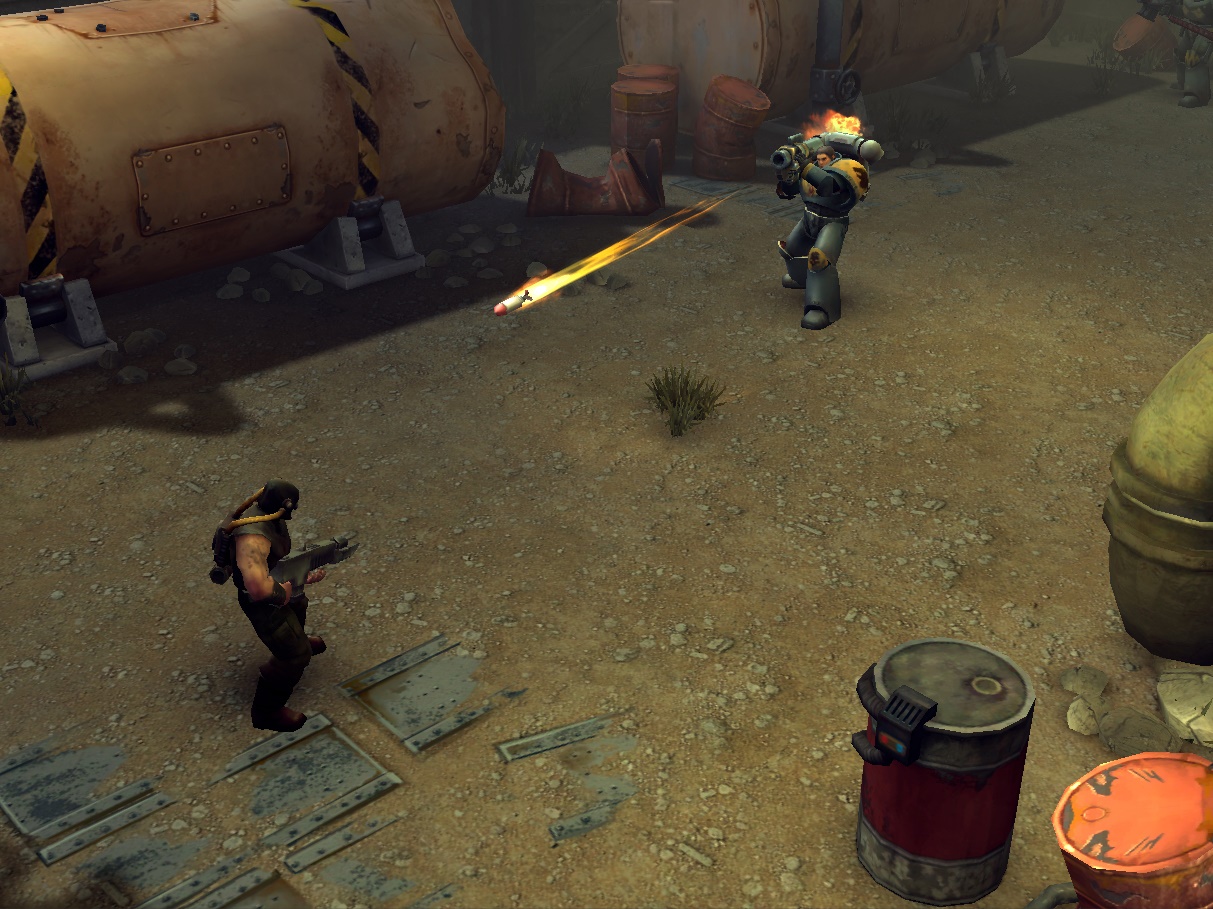
Play the Cards You’re Dealt
At first blush, Space Wolf is a fairly standard grid- and turn-based strategy game. Your units occupy a grid map, and you position them around the battlefield to gain advantages in attacking your enemies. The differentiating factor is the card-based element the game introduces. When one of your unit’s turns comes around, it can take different actions based on the cards in his hand. You start with six cards, and can play up to two each round; at the beginning of each turn, you draw two more. Each unit has its own deck, so there’s no point in trying to save the best cards for a better unit. There are three different basic types of cards; movement, weapon, and effect. Movement cards allow you to move, but with a certain effect; for instance, some cards allow you to move one space farther then your unit’s traditional movement range.
Weapon cards can either be used to attack or to make a move up to your unit’s maximum movement range, and they are then discarded. Some weapons have additional effects, such as a boost to accuracy in certain conditions or forcing an enemy to discard a card. Lots of Chaos enemies have this ability on their weapons and it is infuriating. Losing cards really cripples your options, strategically. Some powerful weapon cards can be equipped instead of used right away, which allows you to use that weapon multiple times so long as it has ammunition. You can discard a weapon card which uses the same ammo type to reload an equipped weapon. Most equippable weapon cards have either a chain effect (more on that next paragraph) or another useful ability like overwatch, which gives your unit a chance to take a free shot at an enemy that moves into its range.
Special cards, finally, can be played to provide a special effect such as drawing additional cards or applying a buff to your unit like increasing defense or recovering health. Some cards feature chain abilities which activate automatically whenever their activation condition is met during battle – for instance, some cards will provide a bonus to accuracy when you perform a ranged attack. Cards are not discarded when their chain abilities activate, so sometimes it can be a good idea to hold onto those cards instead of playing them.
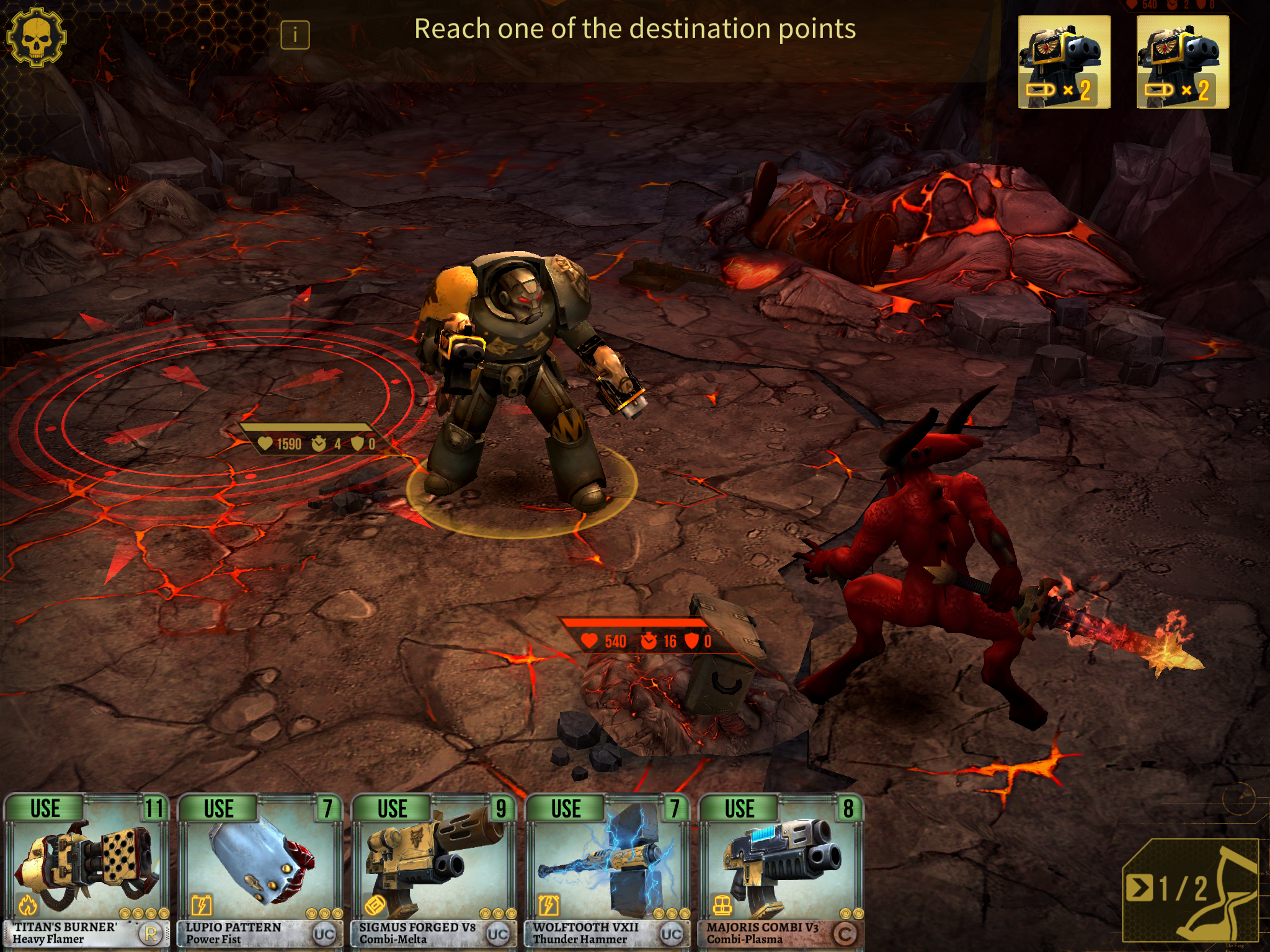
Pick Your Battlefield
Space Wolf features a few different game modes to enjoy. The campaign is pretty self-explanatory; you guide Valgard and his men through several chapters of Chaos-murdering good times. There are four different challenge mode to conquer as well, which also includes the ability to play as the Chaos side which is pretty cool. Finally, you can play pretty much all of the modes cooperatively, so if you and a friend want to fight for the Emperor you can do so.
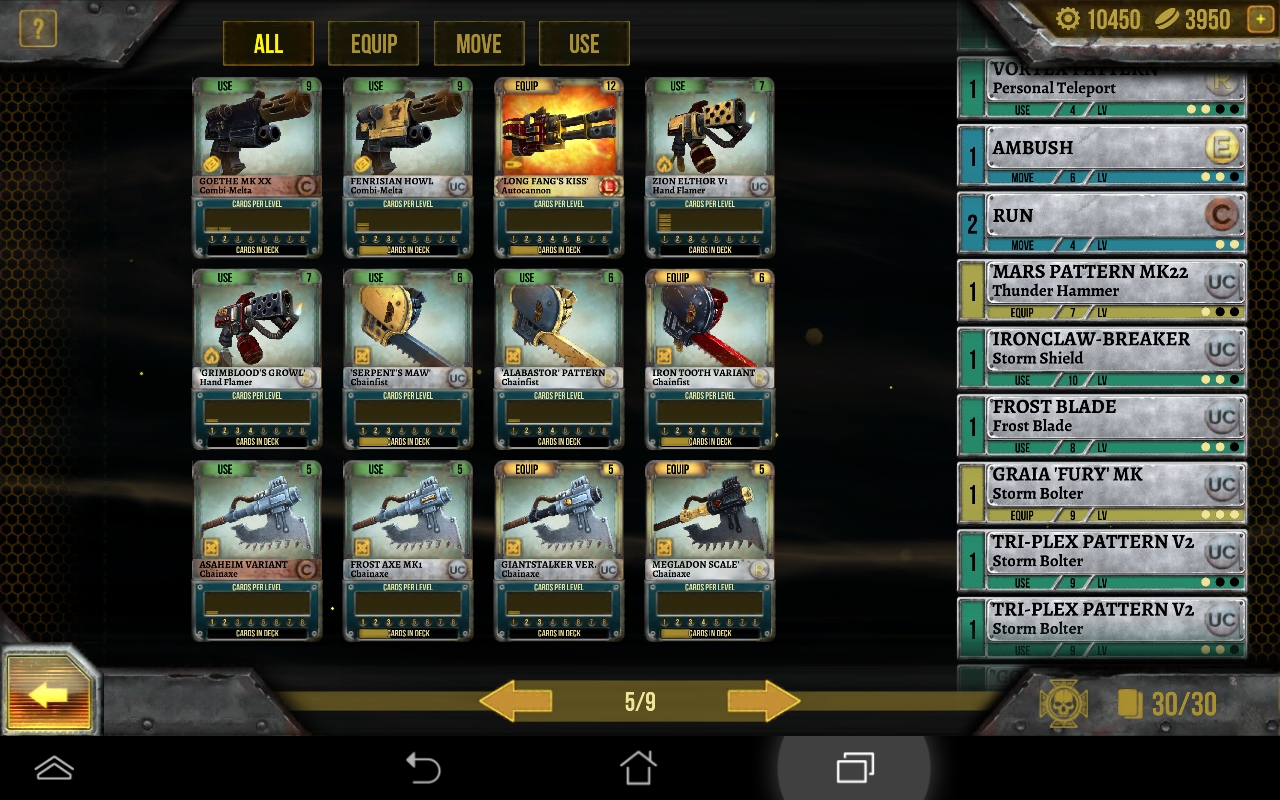
And That’s The End of The Good News
The game system – taken on its own merits – is really interesting and very satisfying from a strategic standpoint. The card element provides some random elements to vary difficulty enough to maintain a decent or higher level of challenge throughout the campaign. Where the game runs into problems is with its execution. The controls are fairly sluggish – trying to move the cursor around the map to select a space to move to is cumbersome and frequently poorly responsive. It should not take me more than a few seconds to select a destination once I’ve determined where I want to move; the cursor would often not move at all when I was trying to select a space, even when I was holding the thumbstick all the way down for several seconds.
Furthermore, once you get to your destination, you have to select a direction to face, and that has its problems in execution as well. If you’re already facing the way you want to move, sometimes you have to turn another way and turn back because the game won’t recognize your selection to face the same way. It’s generally not a huge problem as it takes like a second to turn away and back, but it contributes to an overall lack of polish. Furthermore-MORE, you can only fire in the direction you are facing; this makes things feel more cumbersome and a little inaccessible at first. You really have to know the area of effect for all weapon cards to situate yourself properly. In the early game you may think an enemy is in your range, but then they aren’t. This problem takes care of itself as you learn more about the game, but again, a lack of polish rears its ugly head.
Finally, I ran into a game-breaking bug a few times during my playthrough. The game semi-froze on me; after making an attack, I could still access the plus button menu to quit the mission (which would result in losing my progress), but the menus and options for actually playing the game would not appear and I could not continue playing the mission. It happened to me twice, effectively forcing me to start the mission over from the beginning. That’s unfortunately my main takeaway from this game; a solid, interesting game system surrounded by a game that frequently just doesn’t work.
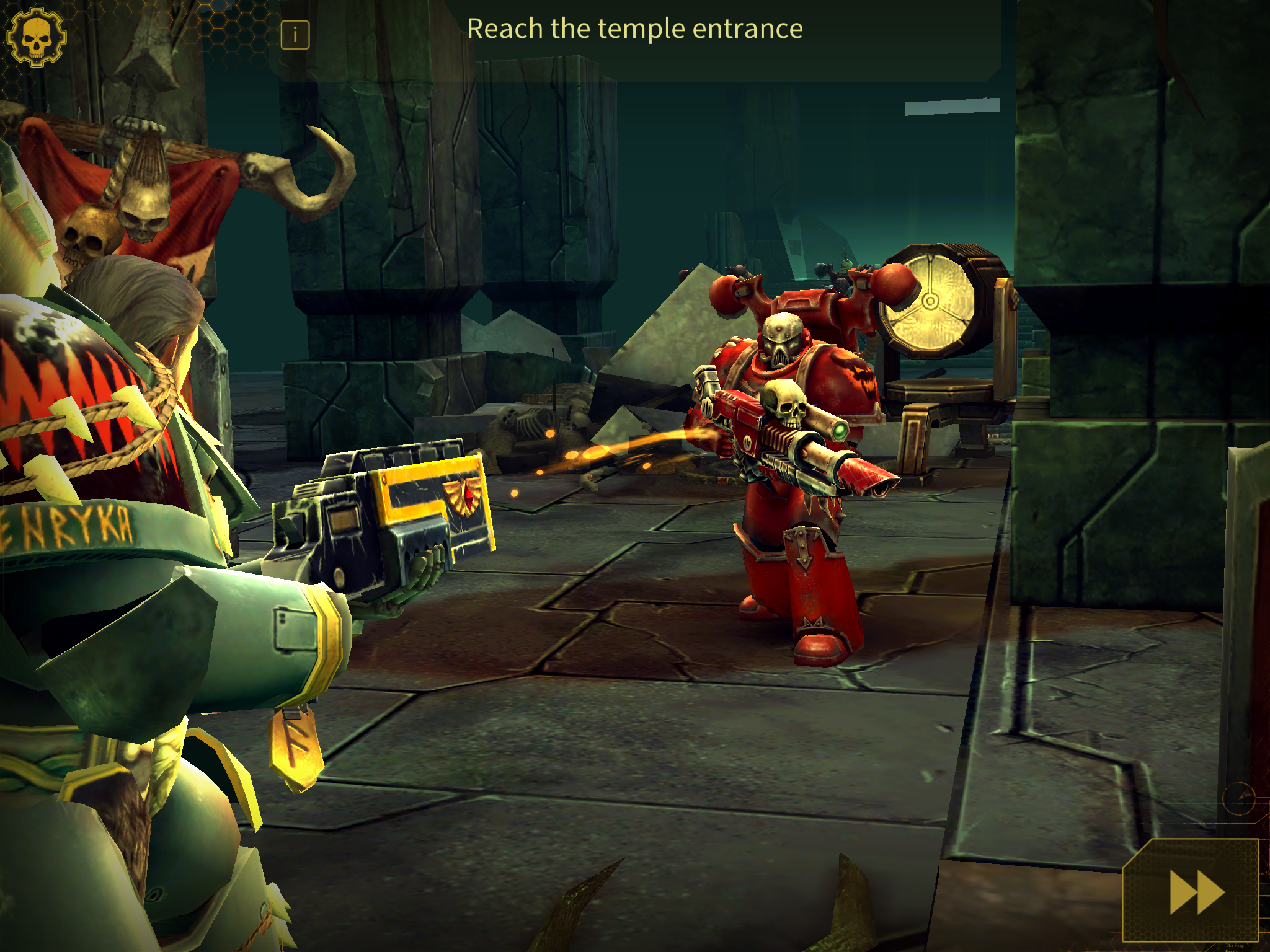
Space Marine Chic
The graphics in Space Wolf share many characteristics with the Space Marines. They are solidly built, but ultimately they look a little generic. Certainly there’s nothing wrong with the game’s 3D graphics; the character models possess a satisfying level of detail and a smoothness of motion and the backgrounds are acceptably rendered as well. I can’t really knock the game’s graphics, there are just a lot of games that look better. The music is similarly solid; it is dark, oppressive, and militaristic, which perfectly accentuates the setting and Warhammer 40K’s general vibe.

For Fans of the Emperor
Warhammer 40,000: Space Wolf has a lot of good ideas that should make for a very good game. The card game mechanics blended into the more traditional turn-based strategy game are an interesting wrinkle to the genre, and make for some satisfying tactical gameplay. Unfortunately, the game as a whole just lacks polish. The controls are sluggish, the directional nature of attacks takes a while to get the hang of, and I ran into a bug that forced me to restart missions a couple of times. With a patch this game would be well-worth the attention of any 40K or strategy game fan, but as it sits it is hard for me to fully recommend it.





Buy Warhammer 40,000: Space Wolf
$17.99
Follow Herocraft
*A game code was provided for review purposes.

